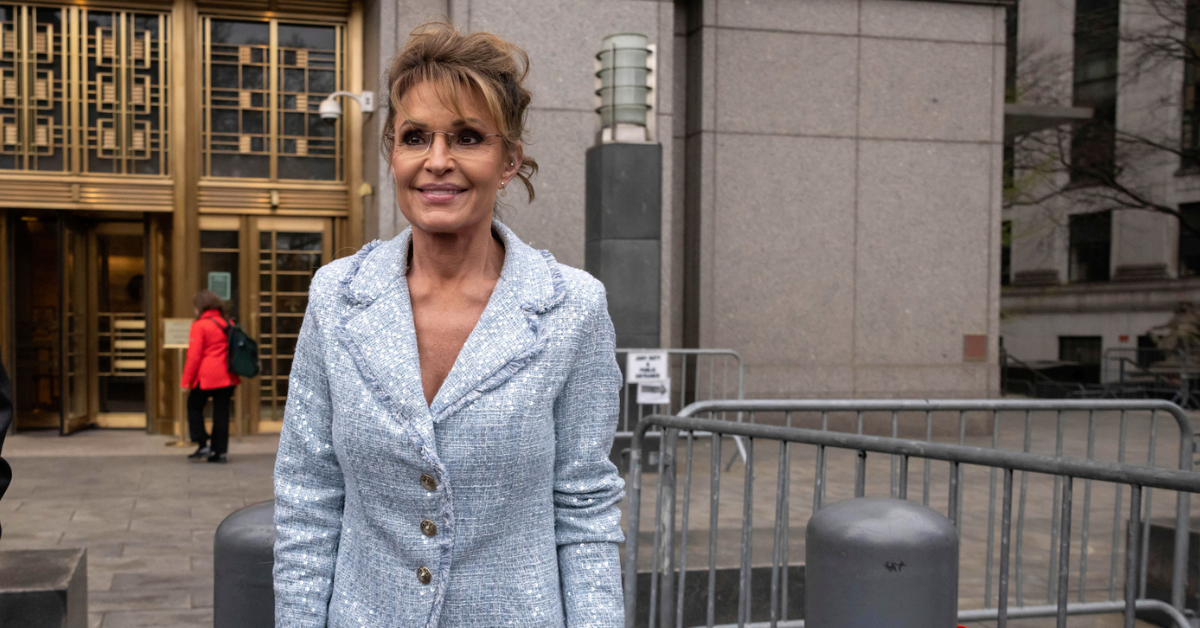Sarah Palin’s defamation retrial against The New York Times ended on Tuesday with a decisive loss for the former governor of Alaska, bringing an eight-year-long legal battle to a close. The case, which started in 2017, had already been dismissed once, only to be resurrected after a federal appeals court ruled that the original dismissal by Judge Jed Rakoff was erroneous. Despite the retrial, a jury rejected Palin’s claims, reaffirming the newspaper’s stance and the protections afforded to publishers under the law.
The trial had a swift conclusion, with the jury reaching a verdict in less than a week. Palin’s first defamation case had been dismissed in 2020, with Rakoff ruling in favour of The New York Times. However, following the appeals court’s ruling, the case was retried, putting the spotlight back on the legal arguments surrounding media liability and freedom of speech. Despite the retrial, the outcome mirrored the earlier ruling, and Palin was once again on the losing side.
The New York Times responded quickly to the verdict, expressing gratitude to the jury for their deliberations and emphasising the significance of the decision for press freedoms. A spokesperson for the newspaper issued a statement saying, “We want to thank the jurors for their careful deliberations. The decision reaffirms an important tenet of American law: publishers are not liable for honest mistakes.”
Palin’s legal team did not offer immediate comments following the ruling. However, Palin herself took to the social media platform X (formerly Twitter) to express her disappointment. “But please keep fighting for integrity in media,” she wrote, urging her supporters to continue pushing for truth and accountability in journalism. She added, “I’ll keep asking the press to quit making things up,” signalling her ongoing frustration with how she feels the media treats her and other public figures.
This retrial, while not entirely unexpected, highlighted the ongoing tensions between the press and public figures, particularly in an era where media trust has been significantly eroded. Over the years, Palin has frequently accused the media of spreading misinformation, and her retrial was initially seen by some as a potential avenue for curbing media freedom. However, the jury’s decision reinforced the notion that the press is afforded protections against defamation claims, particularly when errors are made in good faith.
Palin’s defamation suit originated from an editorial published by The New York Times in 2017. The editorial suggested that Palin’s political action committee had engaged in “political incitement” before the 2011 shooting of former Congresswoman Gabby Giffords.

Specifically, the editorial tied an advertisement from Palin’s PAC to the tragic event, arguing that the ad, which featured stylised crosshairs over certain Democratic candidates, may have incited the shooter. The Times editorial claimed that Palin’s rhetoric contributed to a climate of violence, especially in the context of the Giffords shooting.
In her lawsuit, Palin argued that the editorial was false and defamatory, claiming that the Times had incorrectly linked her PAC’s ad to the shooting. According to the lawsuit, the editorial made it appear as though Palin had personally and directly incited the violence, which she argued was untrue and damaging to her reputation.
The Times corrected the mistake less than 24 hours after the article was published, issuing a clarification stating that no link had been established between the ad and the shooting. However, the correction did not retract the editorial’s broader message, which continued to argue that political rhetoric had contributed to the violence.
While the correction was issued promptly, Palin’s legal team contended that the error was harmful and continued to damage her reputation. Despite the correction, Palin argued that the media’s portrayal of her as a political extremist with violent tendencies had already done significant harm, leading to her lawsuit.
The retrial was also notable because it took place in a climate where the media industry is under increased scrutiny. Over the past few years, public confidence in the media has been declining, with many questioning the credibility and bias of major news outlets.
This shift in public sentiment created a potentially more challenging environment for The New York Times, as jurors may have been more inclined to hold media outlets accountable for errors. However, despite these changing dynamics, the jury ruled in favour of the Times once again.
The ruling also has implications for the broader legal landscape surrounding defamation claims and media liability. The Times’ victory underscores the continued protection afforded to publishers under U.S. law, particularly the Times v. Sullivan ruling of 1964, which established the “actual malice” standard for defamation cases involving public figures. This landmark decision requires that public figures prove that a defamatory statement was made with actual malice, meaning the publisher either knew the information was false or acted with reckless disregard for the truth.
In this case, Palin’s legal team had hoped that her retrial could challenge the Times v. Sullivan precedent, which has long protected media outlets from defamation claims. Some conservatives had seen Palin’s renewed legal effort as an opportunity to revisit this foundational ruling and possibly weaken its impact. However, the Second Circuit Court quickly quashed those hopes, ruling that Palin had waived her right to challenge the actual malice standard because she had not raised the argument in a timely manner.
The legal defeat for Palin is also part of a broader trend in which the media are facing increasing legal and political challenges. From the Trump administration’s battles with the press to the rise of conservative legal efforts to dismantle media protections, the relationship between journalists and public figures has become increasingly adversarial. In this context, the Times’ victory can be seen as a crucial moment in defending press freedom, especially as journalists are frequently vilified by political figures and labelled as enemies of the people.
For The New York Times, the victory serves as a reaffirmation of its commitment to journalistic integrity. It also signals the continuing importance of protecting the press against lawsuits that seek to undermine the First Amendment and free speech rights.
The outcome of this retrial shows that, despite the challenges and changes in the media landscape, the legal protections for journalists remain strong. In an era when public figures often target the press, the ruling reinforces the notion that publishers are not liable for honest mistakes, and their ability to correct errors without facing costly lawsuits is crucial to the functioning of a free press.
Disclaimer: This article has been meticulously fact-checked by our team to ensure accuracy and uphold transparency. We strive to deliver trustworthy and dependable content to our readers.


